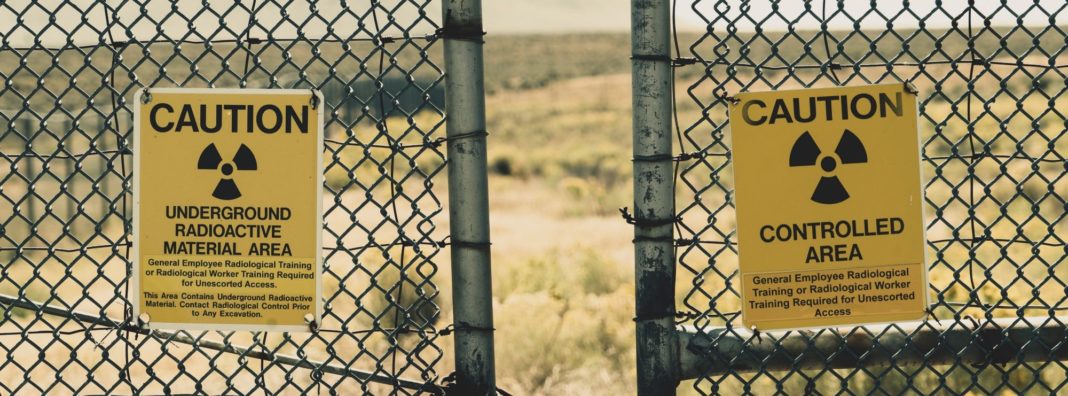
Earlier this month, when President Trump released his proposed budget, there was a noticeable line-item missing. In each of his previous three budget proposals, Trump included appropriations of around $120 million to restart the licensing process for the Yucca Mountain Nuclear Waste Repository. Each year those appropriations have been rejected by Congress.
This year, the President appears to have had a change of heart. The traditional $120 million dollar appropriation for Yucca Mountain is nowhere to be found in his budget proposal. In fact, there is no mention of support for Yucca Mountain at all. Tweeting just days before the budget was released, Trump hinted at this change of heart when he told Nevadans, “I hear you on Yucca Mountain and my administration will RESPECT you!”
The tweet implies that Trump is finally siding with Nevada, where politicians and residents have been fighting hard against the Yucca Mountain project for over thirty years. This not only highlights Nevada’s role as a major swing state (Trump narrowly lost to Hillary Clinton in the 2016 election) but also highlights the political challenges of trying to gain popularity in a state where over two-thirds of the population oppose the idea.
More importantly, the flip-flopping over Yucca Mountain embodies the greatest challenge to effectively managing nuclear waste: instead of being treated as the pressing environmental issue that it is, it has become a political tool to be wielded. In fact, after more than three decades and over $15 billion spent, Yucca Mountain is no closer to storing waste than when it was designated to do so in 1987.
What to do with all this waste?
A train collides with a storage container during testing.
One of the major drawbacks to nuclear energy is that it creates highly radioactive waste, which, if not handled properly, can pose major health risks and even death to those exposed. The good news is we have developed highly effective methods for dealing with that waste, such as storing it in large steel containers that not only shield the outside environment from radiation but are capable of withstanding direct impact from a speeding train and fires that reach nearly 1,500 degrees Fahrenheit (akin to being dropped into an active volcano). The bad news is that we currently have over 80,000 tons of this waste stranded at nuclear sites around the country with no place to go.
Scientists have been wrestling with the issue of how to handle our country’s nuclear waste since 1955. Much of the effort to identify a long-term nuclear waste solution has been put into building a fuel repository. The repository is meant to act as a vault, sealing away radioactive nuclear waste for 10,000 years or more. In 1982 Congress passed the Nuclear Waste Policy Act (NWPA) to begin the process of finding a suitable geological storage site. Nine sites were initially proposed, including Yucca Mountain, Hanford Washington, and Deaf Smith County, Texas. Yucca Mountain was eventually selected as the preferred site due to a number of factors, including socioeconomic impacts, geology, hydrology, and costs.
An amendment to the NWPA in 1987 formally established Yucca Mountain in Southern Nevada as the primary site for long-term fuel storage, shackling the country’s nuclear future to a small mountain 100 miles northwest of Las Vegas. To this day, Nevadans refer to the NWPA as the “Screw Nevada Bill” because it essentially forced the nation’s nuclear waste upon them. It’s easy to see why Nevadans would be so upset.
Despite strong state opposition, between 1983 and 1998, the US Department of Energy spent nearly $6 billion on scientific and technical analysis to certify the viability of the Yucca Mountain site. In a 1998 report on the technical feasibility of Yucca Mountain, DOE concluded:
“Over 15 years, extensive research has validated many of the expectations of the scientists who first suggested that remote, desert regions of the Southwest are well-suited for a geologic repository. Engineered barriers can be designed to contain waste for thousands of years, and the natural barriers can delay and dilute any radioactive material that migrates from the waste packages.”
According to the NWPA, 1998 was the year the Department of Energy was supposed to take ownership of the nation’s spent nuclear fuel. But that deadline came and went.
Twelve years later and not an ounce of waste has been stored in the repository, yet the shackles remain. New concerns are being raised over the geological reliability of Yucca Mountain and the costs of coping with risks. Opposition from residents and politicians in Nevada led President Obama to suspend the certification of the site, and now it looks like it is pushing Trump to do the same. If we want to have any hope of finding a nuclear waste solution in this country, we need to chart a new path forward. If we don’t, the financial and environmental costs could be immense.
The Cost of Inaction
Thus far, the Department of Energy has spent a whopping $15 billion on a glorified tunnel. That, however, is not the only cost the Yucca Project has created.
When the NWPA was passed, it also established the Nuclear Waste Fund as a means of paying for the eventual long-term storage project. According to the Act, utilities were required to pay $1 into the fund for every megawatt-hour (MWh) of energy produced at a nuclear plant. That may not sound like much, but those dollars add up.
Consider the R.E. Ginna Nuclear Power Plant in Ontario, New York. That plant has one reactor with a generating capacity of 576 MW — roughly enough to power 500,000 homes. That is only a one time measure of the total power output capabilities of the reactor. Over the course of a single year, that reactor produces nearly 4.7 million megawatt-hours. At $1 per MWh, Exelon Corporation, who owns the reactor, pays nearly $5 million a year to a waste fund that thus far has failed to store a single ounce of waste.
But R.E. Ginna is small for a nuclear reactor. It happens to be the smallest reactor currently operating in the United States. The Palo Verde Generating Station in Arizona, on the other hand, has three reactors with a combined generation capacity of 3,990 MW. What does that look like in terms of annual generation? It comes out to 32.3 million MWh. That is nearly seven times the energy production, and seven times the waste fund payment that Exelon pays for the R.E. Ginna plant. Ultimately, all of these costs fall to the consumers who receive electricity from these plants. DOE stopped collecting the fund in 2014, but it currently sits at around $43 billion.
The Nuclear Waste Fund, however, is not the only growing expense created by Yucca Mountain. Remember the 1998 completion deadline mentioned earlier? Once it passed, the federal government was officially on the hook for taking ownership of nuclear waste at sites around the country. Its failure to do so means that the government — and therefore the taxpayer — is liable for on-site storage costs plant owners incur to temporarily store waste. As of 2017, DOE had paid $6.9 billion to utilities to cover those liabilities and may end up paying upwards of $50 billion by the time all is said and done. Estimates put the daily cost to taxpayers for these liabilities at around $2.2 million.
Fixing these costs is not just crucial to reduce the staggering financial burden it places on taxpayers, but is also crucial to the feasibility of a strong nuclear energy sector in the future. A sector without which the US will struggle mightily to meet its climate goals.
If policymakers will only take a step back and assess the wide array of options available for dealing with nuclear waste, they will see there are a number of feasible options that don’t require us to bully Nevada into storing our nuclear waste. We already have train- and lava-proof storage containers for fuel. Development of an interim storage facility where those casks could be kept would grant a temporary reprieve from DOE’s liability costs and give scientists and policymakers time to come up with a workable solution.
Nuclear reactors are in development that could run off of current spent nuclear fuel supplies (the source of nuclear waste), turning a liability into a valuable resource. France generates three-quarters of its power from nuclear energy and handles waste by reprocessing — aka recycling — fuel to return it back to a usable form. Cost concerns are often raised in opposition to implementing reprocessing in the US, but it is hard to complain about costs when the price of inaction continues to rise.
Regardless of the eventual solution that solves our waste storage problem, it is time to acknowledge the value of moving on from Yucca Mountain. Tunnel vision has already cost us billions — let’s make sure it doesn’t also cost us a greener future.

